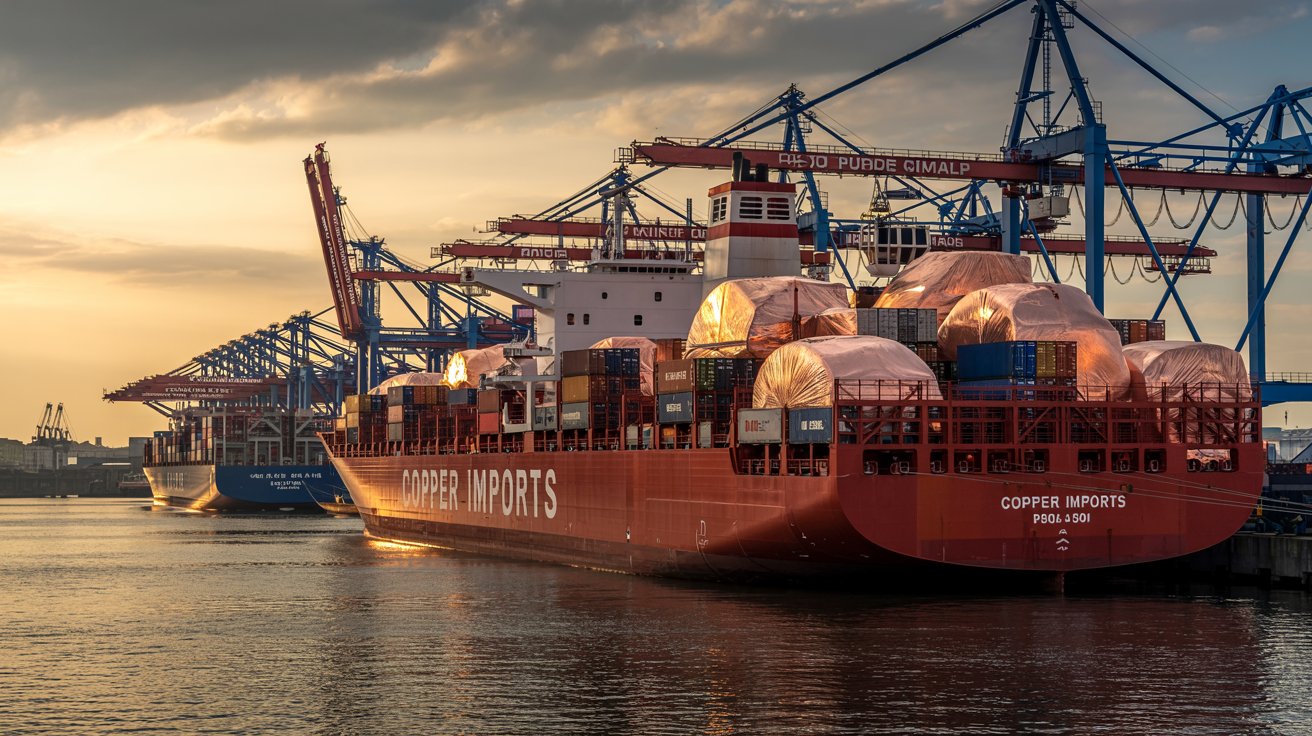Copper Prices Soar as U.S. Threatens New Tariffs and China Stimulates Economy
Copper prices have surged to unprecedented levels, driven by escalating trade tensions between the United States and China, coupled with robust economic stimulus measures from Beijing. This dramatic price surge is reshaping global markets and impacting various industries reliant on the essential metal.
Understanding the Copper Price Surge
To fully grasp the impact of this price hike, it’s crucial to examine the key factors behind it. Copper is one of the most widely used industrial metals, playing a vital role in construction, electronics, and energy infrastructure. Any fluctuation in its price significantly affects global trade, production costs, and consumer prices.
The current price hike results from two major global events:
- U.S. Trade Policies and Tariff Threats
- China’s Economic Stimulus Driving Demand
Let’s break these down in detail.
U.S. Tariff Threats Push Copper Prices to Record Highs
What’s Happening?
In February 2025, President Donald Trump initiated an investigation into copper imports under national security concerns, a move widely seen as a precursor to imposing new tariffs. The announcement has fueled significant market volatility, causing copper futures on New York’s Comex to reach a record $5.374 per pound, the highest level in history.
Why Are Tariffs Impacting Copper Prices?
Tariffs make imported copper more expensive, leading to two key effects:
- Increased domestic prices: U.S. buyers are stockpiling copper in anticipation of new duties, pushing prices up.
- Higher production costs: Industries that rely on copper—such as automotive, electronics, and construction—face increased expenses, which are likely to be passed on to consumers.
| Impact of U.S. Tariffs on Copper Prices | Explanation |
|---|---|
| Higher Import Costs | Tariffs make imported copper more expensive, affecting pricing. |
| Domestic Stockpiling | Companies hoard copper to avoid potential higher costs. |
| Increased Consumer Prices | Rising copper prices lead to higher prices for goods. |
| Market Volatility | Investors react to uncertainty, leading to price fluctuations. |
China’s Economic Stimulus Increases Global Demand
What’s Happening?
China, the world’s largest copper consumer, has launched aggressive stimulus measures to boost its slowing economy. These include:
- Lower interest rates
- Infrastructure investment in real estate and manufacturing
- Support for the construction sector
As a result, copper demand has surged, causing prices on the London Metal Exchange (LME) to surpass $10,000 per ton for the first time in five months.
How Does China’s Demand Affect Copper Prices?
| China’s Economic Actions | Effect on Copper Prices |
| Lower interest rates | Encourages borrowing and investment in infrastructure. |
| Increased construction | Higher demand for copper in building projects. |
| Manufacturing growth | More production leads to higher copper consumption. |
| Stimulus in real estate | Boosts housing projects, increasing copper use. |
Since China accounts for nearly 50% of global copper consumption, any economic stimulus directly impacts global prices.
Industries Affected by Rising Copper Prices
The rapid increase in copper prices is having a significant effect on multiple industries, making it more expensive to produce essential goods and services.
1. Electronics Industry
Copper is a key component in circuit boards, wiring, and semiconductors. Higher copper costs mean more expensive consumer electronics, from smartphones to household appliances.
2. Automotive Industry
- Electric vehicles (EVs) require 4x more copper than traditional gasoline-powered cars.
- Rising copper prices could increase EV costs and slow down production.
3. Construction Industry
- Used in plumbing, electrical wiring, and roofing, copper is essential for real estate projects.
- High prices could slow down construction and raise housing costs.
Global Market Reactions and Investor Sentiment
Investor Reactions to Copper’s Surge
Financial markets have responded strongly to these developments:
- Mining stocks are soaring, with companies like Freeport-McMoRan and BHP seeing stock price increases.
- Traders are closely monitoring trade policies, as any policy shift could cause further price changes.
- Hedge funds are investing in copper futures, betting that demand will stay high.
What’s Next for Copper Prices?
The future of copper prices depends on three major factors:
| Factor | Potential Impact on Copper Prices |
| U.S. Tariff Decisions | If tariffs are imposed, prices could rise further. |
| China’s Economic Recovery | Sustained demand could keep prices high. |
| Mining Supply Constraints | If production issues arise, supply shortages will drive prices up. |
Conclusion: Will Copper Prices Keep Rising?
Copper prices are likely to remain volatile as the world’s two largest economies continue their trade and economic maneuvers. The combination of U.S. trade policies, Chinese demand, and market speculation is keeping prices high. Industries and investors must stay alert to ongoing policy shifts and global demand changes.





